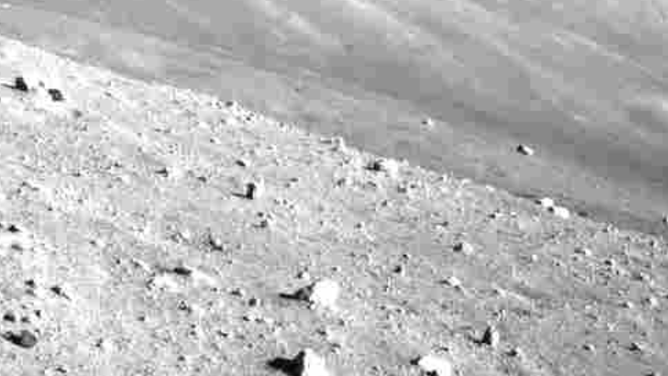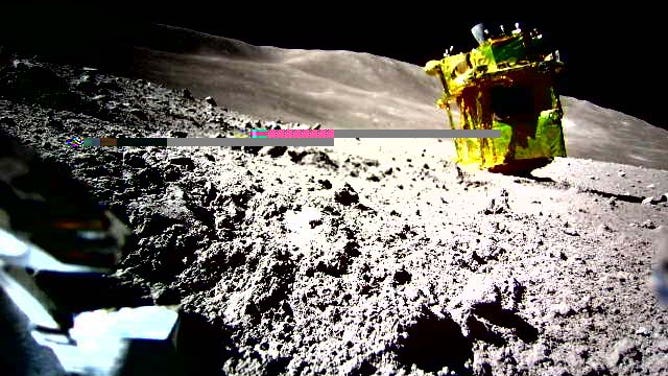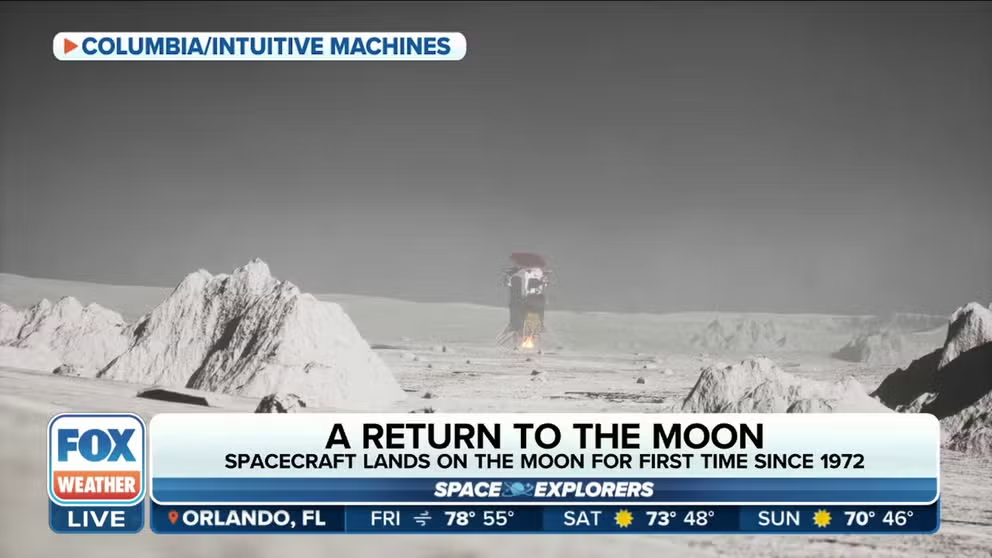Japan’s Moon lander defies expectations, survives temperatures of -200 degrees during lunar night
Japan is the fifth country to land on the lunar surface. The U.S. remains the only country to land humans on the Moon. Space exploration company Intuitive Machines, Inc. became the first private company to land a spacecraft on the Moon on Feb. 22.
See what's new in the journey to reach the Moon
What's next for exploration of Earth's only natural satellite.
Japan’s official space agency has made a surprise announcement that its moon lander has survived a lunar night and is again communicating with operators.
The Smart Lander for Investigating Moon mission, or SLIM for short, landed upside down on the Moon on Jan. 19 and, within a few weeks, entered a period without sunshine, where temperatures dropped to more than -200 degrees.
The Japanese Aerospace Exploration Agency, or what is commonly referred to as JAXA, cautioned space watchers before lunar nightfall that certain parts of the spacecraft weren’t designed to survive extreme cold temperatures, and photos released by the agency on Feb. 1 might have been some of its last communications with the machine.

Japan's space agency is reviewing new data from its lunar lander
(Japanese Space Agency (JAXA) / FOX Weather)
Following a warmup on the lunar surface, JAXA announced that it was briefly in contact with its SLIM spacecraft.
"Last night, a command was sent to #SLIM and a response received, confirming that the spacecraft has made it through the lunar night and maintained communication capabilities," JAXA posted on X, the social platform previously known as Twitter.
ODYSSEUS MOON LANDER CONTINUES TO SEND BACK PHOTOS SHOWING UNEXPLORED REGION NEAR LUNAR SOUTH POLE
Communications have been limited due to the spacecraft now enduring the impacts of a lunar day, when temperatures could reach 200 degrees, putting a strain on some equipment.
"If we continue to communicate, things will get even hotter, so yesterday I decided to communicate for a while and then take a break again," JAXA posted about the spacecraft.
The agency is expected to conduct further observations of the Moon’s surface once the machine’s internal temperatures are stable.
Aside from dealing with the effects of extreme temperatures, controllers have been limited in their use of functions aboard the SLIM because the spacecraft landed upside-down.

A phot from the probe Lev-2 shows the SLIM lander on its nose on the lunar surface.
(JAXA)
Engineers previously stated they have had limited use of the craft’s solar cells for power generation due to its orientation.
During its lunar night, the lander was joined by the Intuitive Machines’ Odysseus spacecraft, which was deployed to the Moon’s South Pole, far away from the Shioli crater.
The Houston-based company made history by becoming the first private entity to put a spacecraft on the Moon.
Similar to JAXA, Intuition Machines also encountered a less-than-picture-perfect landing, with the rover now sitting at an angle, limiting operations.
ODYSSEUS MOON LANDER ‘TAKING A NAP’ IN HOPES OF EXTENDING FIRST AMERICAN LUNAR MISSION IN DECADES
The American craft now faces lunar night, hoping that operators can somehow power up the spacecraft when the region sees sunlight again in a few weeks.
"Odysseus is a success from NASA’s point of view. There is a big difference in landing a bunch of instruments and landing a crew," NASA Administrator Bill Nelson said Wednesday.
Several additional lunar landers are expected to launch in 2024, including an additional mission by Intuitive Machines known as IM-2.
Spacecraft lands on Moon for first time since 1972
America returned to the Moon on Thursday with the Intuitive Machines Odysseus lander touching down near the unexplored region of the lunar South Pole.

